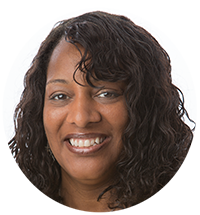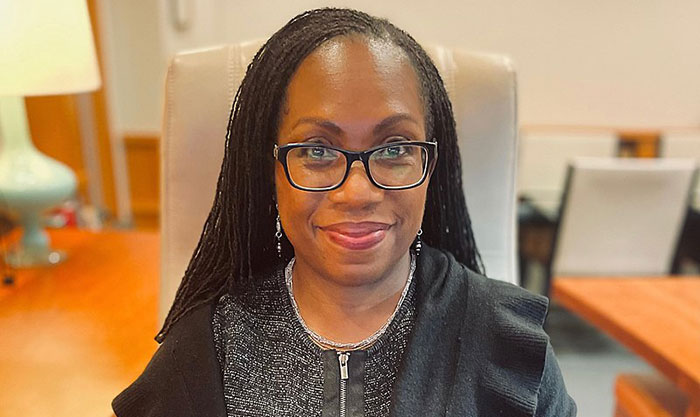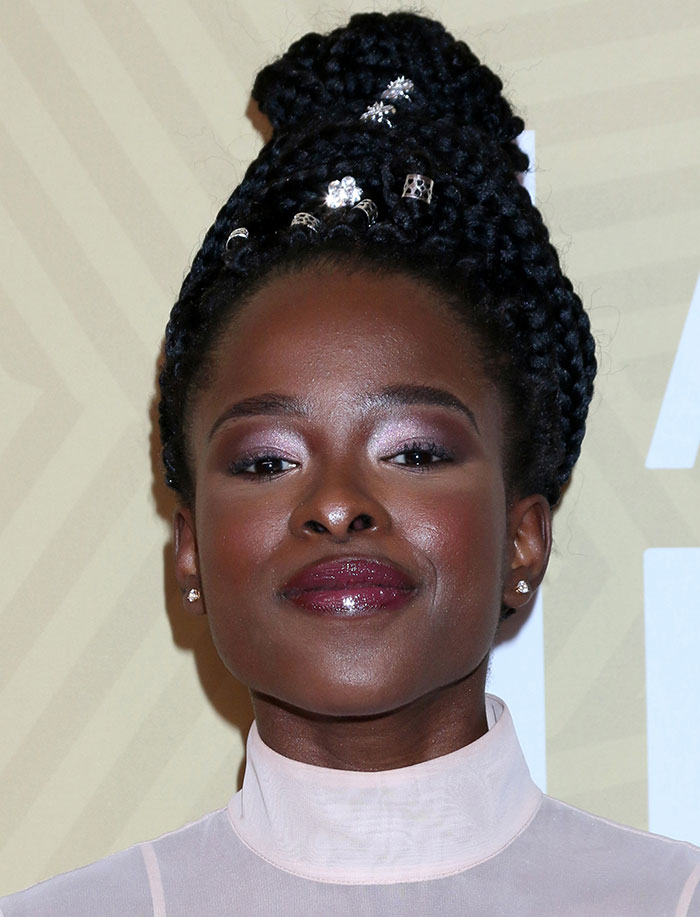
Black history is happening this very second. And it’s time to tune in, bear witness and participate.
That’s a key message that members of ASI’s Diversity & Inclusion Council, along with diversity advocates everywhere, want people of all racial and ethnic backgrounds to act on during this Black History Month, which occurs each February.

“Right now, and within the last year or so, there have been many important developments in Black history,” says Stephanie Turner-Scott, executive director of ASI Show operations and a leading member of ASI’s Diversity Council. “We, as a society, need to do a better job of raising awareness about this and providing support for these advancements so that they become part of lasting change for the better.”
Don’t get Turner-Scott wrong. She and other diversity proponents are all for educating about and celebrating the wide-ranging contributions and achievements of African Americans and members of the African diaspora down through the years, as well as solemnly reflecting on and understanding the struggles such people have endured, from slavery to systemic racism.
Still, it’s important to go beyond reflection and engage with the present – to recognize that more history is happening, or on the verge of happening, and to support these groundbreaking moments as they become potential pillars of the ongoing historical narrative, expanding and enriching Black history, and thereby all American history, of which the experience of African Americans is a foundational and essential part. That can help build a more equitable, inclusive future.

“‘What am I doing to make things different? Where am I affecting change?’ Those are honest questions to ask yourself.” Stephanie Turner-Scott, ASI Diversity Council
“There has been progress, but sometimes it’s really hard to see,” says Turner-Scott. “Those are the moments when you have to ask yourself, ‘What am I doing to make things different? Where am I affecting change?’ Those are honest questions to ask yourself. You may not always like the real answers, but you have the opportunity to continue to grow, learn and educate others.”
One development that everyone should be aware of is that there’s a possibility that President Joe Biden will nominate the first Black woman to serve on the Supreme Court, given Justice Stephen G. Breyer’s intention to retire. As of this writing, there remained a number of highly qualified candidates.
Potential appointees include Ketanji Brown Jackson, a 51-year-old judge on the U.S. Court of Appeals for the District of Columbia Circuit who graduated from Harvard Law School and clerked for Justice Breyer. There’s also Leondra R. Kruger, a 45-year-old justice on the California Supreme Court who graduated from Yale Law School and clerked for former Justice John Paul Stevens.

Ketanji Brown Jackson is reportedly on the shortlist to become the first Black female Supreme Court justice.
Holly Thomas, 43, is another possibility. The graduate of Stanford University and Yale Law School was recently confirmed to the San Francisco-based U.S. Court of Appeals for the 9th Circuit; she is only the second Black woman to sit on the court. Meanwhile, 55-year-old J. Michelle Childs is a Federal District Court judge in South Carolina who is reported to be a strong contender.
The prospect of a Black woman earning a seat on the Supreme Court has many excited.
“I’m ecstatic!” says Virginia Lucas, a user experience interaction designer at ASI who won the company’s Unsung Hero Award for 2021.
“We’re living in historical times and this selection would be the perfect fit,” Lucas continues. “Whoever is chosen will not only be the first Black female Supreme Court justice, but she will also be highly qualified to serve in that capacity. This decision will also equalize the high court by making it more reflective of the nation it serves.”
Should a Black woman be confirmed to the Supreme Court, it would mark the first time four women sat on the bench simultaneously and the first time two Black justices were on the high court at once.

“Whoever is chosen will not only be the first Black female Supreme Court justice, but she will also be highly qualified to serve in that capacity. This decision will also equalize the high court.” Virginia Lucas, ASI Diversity Council
Amanda Smith called the potential appointment a “huge step for representation on the Supreme Court.”
“Diversity is such an impactful part of the government because it allows for a true representation of the American people and gives us the hope that our voices and concerns will be heard,” says Smith, a marketing manager in supplier sales at ASI. “It paves the way for positive change within the laws and legal system and it provides inspiration for women and people of color.”
Word on the Supreme Court appointment comes about a year after Kamala Harris became the first Black woman – and first woman of color – to serve as Vice President of the United States. The day she was inaugurated, 22-year-old writer Amanda Gorman, who is Black, became the youngest inaugural poet in U.S. history.

Amanda Gorman is the youngest ever inaugural poet in U.S. history.
The history-making within the last year or so doesn’t stop there, though.
Raphael Warnock became the first Black senator to represent Georgia. Just last year Juneteenth was officially declared a federal holiday. In 2021, Tishaura Jones became the first Black woman to be elected mayor of St. Louis.
Elsewhere, legendary entertainer and civil rights activist Josephine Baker was interred at the Pantheon in Paris – the first Black woman to have that honor. Terence Blanchard became the first Black composer whose work was performed at the Metropolitan Opera. And at 14 years old, Zaila Avant-garde became the first African American to win the Scripps National Spelling Bee after nearly 100 years of competitions.
The list of achievements could go on.
In keeping with the belief that education and reflection combined with positive action is the way forward, ASI recently hosted a Day ON of Service. Strategically held on Martin Luther King Jr. Day, the initiative enabled ASI employees to take time away from work to volunteer in do-gooding activities for the community, attend a virtual lecture on Dr. King, and/or visit the African American Museum in Philadelphia. ASI also released a video tribute to Dr. King.
In honor of Martin Luther King Jr. Day, ASI’s Diversity Council asked a handful of employees to record themselves discussing what the legendary civil rights leader means to them. Here’s what they – and Chairman Norman Cohn – had to say.
Activities for the Day ON included packing and sorting non-perishable food items and hygiene products for the Family Service Association of Bucks County’s food pantry, packing/sorting books for Tree House Books (a giving library and literacy center in Philadelphia), and taking part in meal preparation for folks in need.
Marinette V. Toledo, a senior data analyst with ASI, participated in the book drive packing.
“These activities are in the spirit of leaders like Martin Luther King Jr.,” Toledo shares. “We should do these activities not only during Martin Luther King Jr. Day, but throughout the year. It is rewarding to contribute to a worthwhile cause. It also demonstrates to my children that they can assist in whatever manner they can.”
Leena Patel, team lead in ESP Electronic Imaging on the ESP Information Team at ASI, attended the virtual lecture on Dr. King, which was presented by Dr. Brenda Ingram-Wallace, a professor at Albright College. Patel left with what for her was new knowledge about Dr. King, such as that he was a pastor and preacher who was influenced greatly by Jesus and Gandhi. She believes it’s important for ASI – and all companies – to host Day ON events.
“It educates people on pivotal times in history and displays people who shouldn’t be forgotten,” Patel says. “We should remember the people who made it possible to live in a better society. A day of service encourages all Americans to volunteer to improve their communities.”
Peyton Settlemyre attended the MLK talk, too. The marketing coordinator here at ASI gained an actionable takeaway from the talk that she plans to put into practice.
“What struck me,” Settlemyre says, “is how important it is for people who are not of color to stand up and constantly be an ally to those of color.” She believes the Day ON is a great initiative. “All companies,” Settlemyre says, “should focus on educating staff members to ensure that the work environment is accepting and inclusive of all people regardless of their gender, race and heritage.”
For sure, that’s something ASI – and the company’s Diversity & Inclusion Council – plan to do in the months and years to come.
“Diversity and inclusion should be intentional and included as part of the organizational culture,” says Turner-Scott. “It can’t be a one-and-done. There has to be a continuum and an action plan. The emphasis has to be on sustained action.”